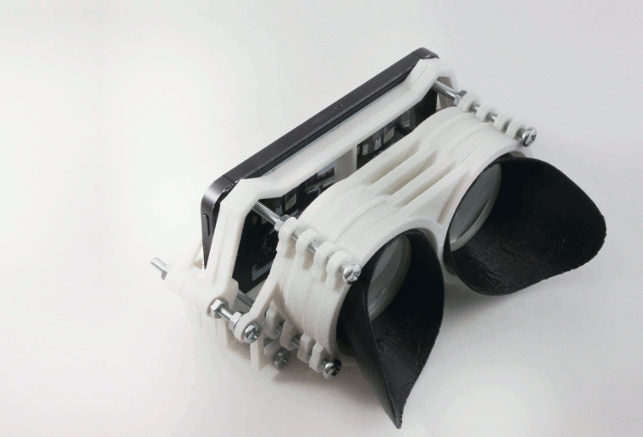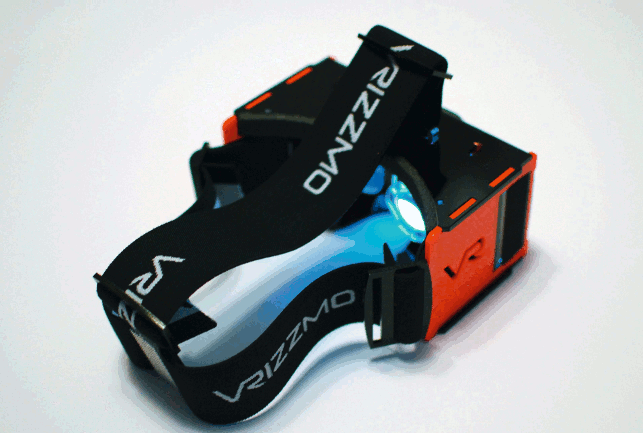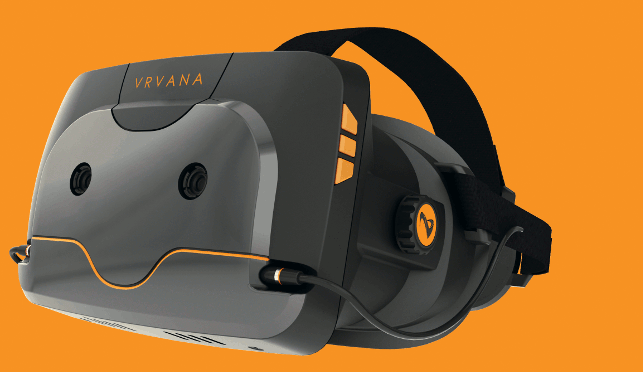Gaze in wonder
The Altergaze is a new VR headset on the block delivering a high quality mobile VR experience.

The user simply slots their smartphone in, adjusts the lenses to suit and the Altergaze will then create a stereoscopic 3D experience with a 110° field of view.
Although this may not sound groundbreaking, what is novel is the fact that it’s open-source, electronics-free, can be 3D printed (apart from the lenses and screws), is completely customisable and comparatively cheap.
Created by London-based Romanian designer Liviu Antoni using Autodesk 3ds Max and Maya, the intention was always to use 3D printing as the main method of manufacture and distribution.
“VR for smartphones is just starting, so making the most accurate VR headset possible is our first goal. 3D printing allows us to do that,” says Antoni.
With the CAD files freely available, users can tailor their headset before printing. Currently there are 8.4 million combinations possible, with more underway.
“But the variety isn’t driven by aesthetics alone.
Depending on every person’s smartphone model, eyesight and facial physiognomy ,the position of the lenses changes too in order to offer perfect stereoscopy.
“Every Altergaze unit is unique and personal and we think that is the beauty of our product,” says Antoni.
Following a successful Kickstarter campaign in May 2014, Antoni is working towards a launch date.
Heads up
Another product that turns a smartphone into a VR headset is the Vrizzmo by Polish company De Jet Works.

The plastic case with phone inside is strapped to the user’s head. Lenses separate the display into sections for the left and right eyes with specially designed apps creating the stereoscopic 3D effect.
“We focused mainly on providing the best optics within a reasonable price range and keeping it small, but packed with features to deliver the best experience,” explains Dariusz Zolna, Vrizzmo’s CEO.
Zolna created his first prototype with LEGO bricks and lenses he took out of a toy, secured together with rubber bands.
Only following his second prototype made of modelling foam, did he sketch his ideas and translate them into AutoCAD. These files were then used to make CNC machined parts.
“As we were producing new prototypes at least twice a week, there was no need to use slow and expensive 3D printing in the process,” adds Zolna.
With each iteration the product improved not only in terms of design but also how it was optimised for cost efficiency and ease of assembly.
A launch date hasn’t been set but as a teaser on the website’s homepage, it states ‘big things are coming so stay tuned!’
Real deal
Montreal-based start-up Vrvana plans to go into direct competition with Facebook’s Oculus Rift with its Totem VR headset.

The specifications are similar — a 1080p OLED display with low persistence and a 90 degree field of view — but unlike the Oculus Rift it will include two 1080p cameras, positional tracking and onboard stereo surround sound.
“The aim with the creation of Totem is to change the way we experience multimedia content whether it is gaming, in a classroom, as virtual tourism or to show architecture work. The possibilities are endless,” says Vrvana’s founder Bertrand Nepveu.
The project started life as a sketch in Google SketchUp before it progressed into SolidWorks and prototypes made.
The team recently unveiled what it calls its “pre alpha alpha,” which comprises an 1080p LCD screen and a custom PCB, all mounted inside a 3D printed model.
“From the trials with users we realised that we still had to cut down on weight. Although the 3D printed model is heavier than the future mass production injection moulded version, we still have found other ways to cut down the weight,” says Nepveu.
The plan is to launch a Kickstarter campaign soon. If it’s successful, Totem will go into full production with units available in early 2015.
Innovative VR headsets from Altergaze, De Jet Works and Vrvana
Default






